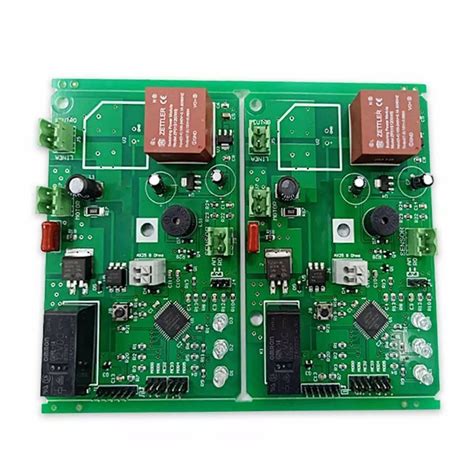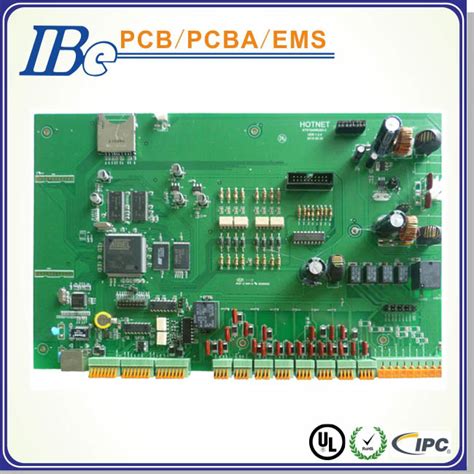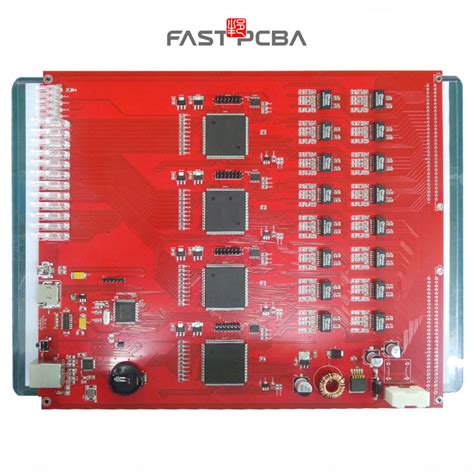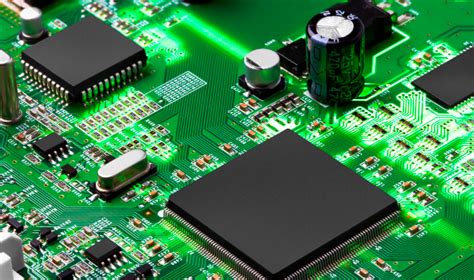Efficient SMT Circuit Board Assembly Techniques and Innovations

Key Takeaways
In the evolving landscape of SMT circuit board assembly (often referred to as PCB assembly or PCBA), it is crucial to stay informed about the latest techniques and innovations that can enhance productivity. One of the significant insights is that the implementation of advanced automation technologies is transforming traditional SMT processes, paving the way for increased efficiency and reduced labor costs. Companies are increasingly adopting smart manufacturing principles, which leverage data analytics to optimize production workflows and minimize downtime.
“Incorporating automation in PCBA not only streamlines processes but also improves consistency in quality, which is essential for meeting the demands of various industries.”
Moreover, sustainability has become a focal point in modern SMT practices, driving innovations that reduce waste and energy consumption. Emphasizing best practices in quality control within the assembly process ensures that production meets high standards, further solidifying the reputation and reliability of manufacturers in electronic manufacturing.
Investing in cutting-edge tools and equipment is equally important; these advancements can lead to significant improvements in both speed and output quality. As we move forward, keeping abreast of future trends such as IoT integration and AI-driven solutions will be essential for any entity aiming to thrive in this competitive sector.

Introduction to SMT Circuit Board Assembly: Importance and Overview
The world of SMT (Surface Mount Technology) circuit board assembly, or pcb assembly, plays a pivotal role in the modern electronics landscape. As technology continues to advance, the significance of efficient pcba processes cannot be overstated. This technique allows for the mounting of electronic components directly onto the surface of a printed circuit board, leading to smaller, more compact designs that provide substantial benefits in both performance and manufacturing efficiency. The reduced size and weight not only translate into lighter products but also facilitate increased functionality within the same physical footprint.
Moreover, advancements in automation have greatly enhanced SMT assembly efficiency, paving the way for higher production rates and lower defect rates. By incorporating innovative tools and techniques into the pcb assembly process, manufacturers can optimize workflow, reduce waste, and ultimately drive down costs associated with electronic manufacturing. Understanding these elements is crucial for stakeholders aiming to remain competitive in a rapidly evolving market. As we delve deeper into the various facets of SMT circuit board assembly, it becomes increasingly clear that fostering an appreciation for these practices is vital for long-term success in the industry.
Key Techniques in SMT Assembly: Streamlining Production Processes
The demand for efficient pcb assembly techniques has driven the evolution of smt circuit board assembly processes across the electronics manufacturing landscape. A key focus in this area is optimizing the workflow through effective layout design and component placement strategies. Adopting advanced technologies such as automated optical inspection (AOI) and real-time monitoring tools ensures precision in the assembly line, significantly reducing defects and allowing for swift identification of errors. Additionally, implementing a just-in-time inventory approach can streamline production by minimizing waste and ensuring that only necessary components are on hand during the pcba process. Emphasizing worker training on these innovative techniques also plays a crucial role in enhancing overall productivity and maintaining quality standards. As the industry evolves, continuous refinement of these processes will be vital for manufacturers to remain competitive, ensuring that they can deliver high-quality electronic products efficiently and cost-effectively.
Innovations in SMT Technology: Tools and Equipment Enhancements
In the rapidly evolving landscape of SMT circuit board assembly (PCBA), innovations in tools and equipment are key drivers of efficiency and quality. Modern PCB assembly technologies have seen significant advancements that streamline production processes and enhance the accuracy of component placement. Among the most notable innovations is the integration of automated pick-and-place machines, which utilize sophisticated algorithms to optimize placement speed and precision, significantly reducing human error and increasing throughput. These machines are often complemented by advanced vision systems that ensure alignment accuracy for even the smallest components.
Moreover, enhancements in soldering technologies, such as selective soldering and laser soldering, contribute to improved thermal management and reliability of connections on a PCB. This evolution not only minimizes the risk of defects but also lowers costs associated with rework and material waste. To illustrate this, Table 1 summarizes some key tools currently reshaping SMT technology:
| Tool/Equipment | Purpose | Benefits |
|---|---|---|
| Automated Pick-and-Place | Component placement | Increased speed, reduced human error |
| Vision Systems | Alignment verification | Enhanced accuracy |
| Selective Soldering | Targeted soldering in complex assemblies | Improved thermal management |
| Laser Soldering | Precise solder application | Reduced risk of overheating |
The use of these innovative tools not only enhances operational efficiency but also plays a crucial role in improving overall production quality for electronics manufacturers. By adopting these advancements in SMT circuit board assembly, companies can stay competitive in a market that demands both high-quality products and cost-effectiveness. As these technologies continue to evolve, they will undoubtedly lead to even more effective practices in PCB assembly, ensuring that manufacturers can meet the demands of today’s fast-paced electronics industry.
Cost Reduction Strategies in SMT Circuit Board Assembly
Cost reduction in SMT circuit board assembly (SMT pcb assembly) is a critical factor for manufacturers striving to remain competitive in the fast-paced electronics market. One of the most effective strategies involves optimizing the assembly process itself. By utilizing automated solutions, companies can significantly minimize labor costs and reduce the potential for human error. Automation tools, such as pick-and-place machines, can increase production speed while maintaining consistent quality in pcba outputs. Additionally, companies are adopting modular equipment that can be easily adapted for various projects; this flexibility allows for lower equipment investment and maintenance costs over time.
Another cost-saving approach is implementing lean manufacturing principles, which focus on reducing waste throughout the production cycle. This includes streamlining inventory management to ensure that components are available when needed, thereby reducing delays and associated costs. Furthermore, employing sophisticated software solutions to plan and monitor production can provide insights that lead to better decision-making and resource allocation.
Investing in high-quality materials may seem counterintuitive when looking to save money; however, using reliable components can reduce failure rates dramatically, thus avoiding costly reworks or product returns which can heavily impact profitability in pcb assembly operations. Moreover, training employees on efficiency best practices ensures that everyone is operating at maximum productivity while adhering to quality standards.
Together, these strategies create a comprehensive approach to cost reduction without compromising on quality or efficiency in SMT circuit board assembly. By focusing on continuous improvement and embracing innovation, manufacturers can navigate challenges effectively while driving down costs across their operations.

Best Practices for Quality Control in Electronic Manufacturing
Ensuring quality control in pcb assembly requires a systematic approach that integrates rigorous testing and inspection processes throughout the production lifecycle. One of the fundamental practices involves implementing a robust Quality Management System (QMS) that adheres to industry standards, such as ISO 9001. This system helps in establishing clear criteria for assessing the quality of printed circuit boards (PCBs) at every stage, from design to final assembly.
Utilizing automated inspection techniques, like Automated Optical Inspection (AOI), is essential for detecting defects early on. These technologies offer high accuracy and speed, enabling manufacturers to identify issues that might compromise the integrity of the pcba before they escalate into costly rework or scrap. Furthermore, investing in In-Circuit Testing (ICT) can significantly enhance reliability by assessing the functionality of assembled components and ensuring that they meet specified electrical standards.
Another critical component of quality control is conducting regular process audits and assessments. This involves reviewing manufacturing processes to ensure compliance with defined procedures and identifying areas where improvements can be made. Establishing a feedback loop where operators can report anomalies fosters a culture of continuous improvement and helps preempt potential defects.
Finally, training employees on quality standards and best practices is vital for enhancing product reliability. Empowered and knowledgeable staff are more likely to recognize potential issues during SMT circuit board assembly, leading to better overall outcomes in production quality. By adopting these best practices, manufacturers can not only improve their pcb assembly processes but also minimize costs while maximizing efficiency in electronic manufacturing.
The Role of Automation in SMT Circuit Board Assembly
Automation plays a pivotal role in enhancing the efficiency of SMT circuit board assembly (often referred to as pcba). By integrating automated processes, manufacturers can significantly reduce labor costs while increasing production speed and accuracy. Automated systems facilitate the rapid placement of components on circuit boards, ensuring precision that minimizes defects and enhances overall quality. Furthermore, the adoption of robotics in pcb assembly not only streamlines operations but also allows for advanced monitoring capabilities throughout the manufacturing process. Real-time data collection aids in identifying inefficiencies and implementing corrective actions swiftly, driving continual improvement in production lines. With innovations like machine vision inspection systems, automated processes can further ensure that every component complies with stringent quality standards before progressing to the next stage of production. This synergy between automation and SMT technology is not merely about speed; it is about fostering a culture of reliability and consistency in electronic manufacturing that meets the ever-growing demands of today’s market. As these technologies continue to evolve, they will undoubtedly shape the future landscape of SMT circuit board assembly, reinforcing its integral role in efficient and sustainable electronics production.
Future Trends Shaping SMT Circuit Board Assembly
The landscape of SMT circuit board assembly (also known as PCBA) is continuously evolving, driven by rapid advancements in technology and changing market demands. One prominent trend is the increasing integration of smart technologies, enabling real-time data analytics and monitoring during the pcb assembly process. This shift not only enhances efficiency but also minimizes the risk of defects, ensuring higher production quality. Additionally, the emergence of automated assembly systems is transforming traditional manufacturing methods, allowing for better precision and reduced labor costs. As sustainability becomes a focal point in electronics manufacturing, sustainable practices such as using lead-free materials and energy-efficient production processes are also gaining traction. Moreover, the adoption of advanced materials plays a crucial role in enhancing the performance and durability of PCBA products. In this dynamic environment, staying abreast of these future trends is essential for manufacturers aiming to maintain a competitive edge in electronic manufacturing while ensuring that their processes are both cost-effective and environmentally responsible.

Case Studies: Successful Implementations of Efficient SMT Techniques
In the realm of SMT circuit board assembly, various companies have showcased innovative approaches that underline the significance of adopting advanced pcba techniques. For instance, a leading electronics manufacturer recently implemented an automated assembly line that integrated real-time monitoring systems, drastically reducing the cycle time for pcb assembly. This integration not only streamlined their production processes but also enhanced the accuracy of component placement, resulting in lower defect rates and improved overall quality. Another case worth noting is a startup that embraced 3D printing technologies to create custom tools for specific assembly tasks. By tailoring their equipment to their needs, they were able to cut down on setup times and increase operational flexibility. These examples illustrate how adopting innovative methods in SMT techniques can lead to significant efficiency gains and set a benchmark for future projects. Such successful implementations serve as a guide for other firms aiming to enhance their pcba operations while navigating the challenges of modern electronic manufacturing.
Conclusion
In the rapidly evolving field of electronics, SMT circuit board assembly (often abbreviated as PCBA) plays a crucial role by enhancing both production quality and efficiency. The implementation of advanced techniques in SMT circuit board assembly has led to significant improvements in manufacturing processes. Innovative tools and equipment are increasingly incorporated, enabling manufacturers to optimize their workflows and reduce errors. This continuous evolution is parallel to the development of new technologies that can minimize costs while elevating product quality. As industries increasingly adopt automation within their PCB assembly processes, the consistency and speed of production are greatly enhanced. Firms that embrace these strategies not only stay competitive but also transform their operational efficiencies significantly. Ultimately, understanding these trends and best practices in PCBA will be essential for businesses aiming to thrive in an ever-changing market landscape.
FAQs
What is SMT circuit board assembly?
SMT (Surface Mount Technology) circuit board assembly refers to the process of mounting electronic components directly onto the surface of a PCB (printed circuit board). This method enhances the efficiency and miniaturization of electronic devices.
What are the main advantages of SMT over traditional PCB assembly?
SMT offers several benefits, including reduced manufacturing costs, smaller component sizes allowing for compact design, and improved performance owing to shorter electrical paths. This technology enables manufacturers to produce PCBA more efficiently while maintaining high quality.
How do innovations impact SMT assembly techniques?
Innovations such as advanced soldering methods, automated inspection systems, and sophisticated placement machines are continually being developed. These advancements not only improve accuracy in pcb assembly but also increase throughput and reduce defect rates.
What role does automation play in SMT circuit board assembly?
Automation minimizes human error, enhances speed, and ensures consistent quality throughout the assembly process. Automated systems enable manufacturers to achieve high-volume production rates while maintaining flexibility in meeting diverse customer demands.
What are some emerging technologies in electronic manufacturing that affect SMT techniques?
Technologies like robotic process automation, IoT-enabled devices for real-time monitoring, and AI-driven analytics are shaping the future landscape of pcba production. These innovations facilitate smarter decision-making and increase overall production efficiency.
For further information about efficient pcb assembly, please visit our page on PCB Assembly Techniques: click here.






